No ecosystem – terrestrial or marine – has been spared from degradation. Landscape restoration offers a critical pathway towards a holistic transformation of global agricultural and food systems, tipping the scale towards healthy and resilient landscapes. To meet the objectives of the UN Decade on Ecosystem Restoration, policymakers and practitioners are asking for reliable evidence to inform activities, as well as tailored monitoring approaches to track results. We need a global comparative database of evidence on what works, where, for whom, and at what cost.
The Landscape Restoration Transformative Partnership Platform (TPP) is an unusual alliance of scientists, practitioners and policymakers that aims to generate evidence and put it into action for context-specific restoration solutions. By sharing lessons, principles and insights, the TPP will catalyse rapid learning and the transformative development of forest, agricultural and pastoral production systems. This partnership engages with people and results-oriented practices on the ground to produce actionable evidence, linked to practice and policy, that can shift current trajectories and deliver positive outcomes.
To learn more about CIFOR-ICRAF’s restoration activities, visit: www.cifor-icraf.org/restoration-for-resilience/
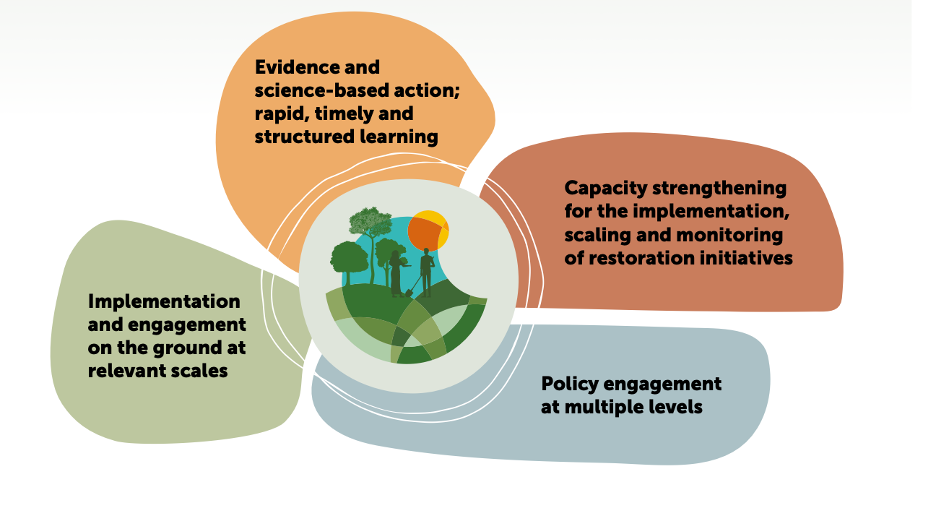
Landscape restoration evidence series

JOINT REFLECTIVE LEARNING MISSIONS: A novel approach to annual monitoring and adaptive learning
JRLMs leverage the strength of dynamic and collaborative teams that come together to collect on-the-ground data and analyse it reflectively. The uniquely designed JRLMs provided the opportunity for World Agroforestry (ICRAF) scientists, project managers, implementing NGOs, National Oversight Coordination Committee (NOCC) members, and farmers to jointly query and learn from one another’s evidence and experience, build on project momentum and consider revising the scaling strategies.
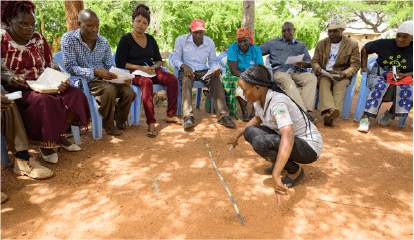
RESTORATION BEGINS ON THE GROUND
Addressing land degradation is key to achieving food and nutrition security. It requires the active and deliberate engagement of multiple stakeholders including farmers, NGOs, government and researchers. In order to reach the land restoration targets set by National Governments and the United Nations Sustainable Development Goals (SDGs), successful restoration efforts need to reach larger numbers of farmers and extend over larger areas than has previously been achieved.

GENDER AND RESTORATION
Gender equality and women’s empowerment are a fundamental cornerstone for sustainable development. Across the globe, many women play a crucial role in agriculture and natural resource management.Unfortunately, despite the immense wisdom, knowledge and skills they hold, women’s voice and opinions are often silenced in decision-making forums as a consequence of long-standing social norms and practices.
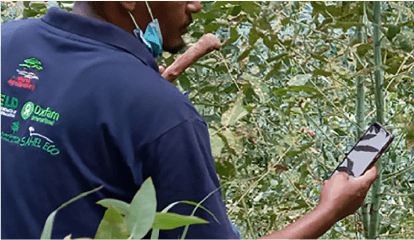
MONITORING RESTORATION – THE REGREENING AFRICA APP
The Regreening Africa is a free, mobile-based App that is bringing farmers, government and project partners in Africa the science of monitoring land restoration. Designed and developed by World Agroforestry (ICRAF) under the Regreening Africa project, the user-friendly App seeks to accelerate the project’s target to regreen one million hectares of degraded land and restore 500,000 household livelihoods across eight countries in sub-Sahara Africa.

ROLE OF MONITORING FOR LANDSCAPE RESTORATION
Given the extent of land degradation at both the local and global scale, it is critical that restoration efforts are effective in the long term and have multiple benefits. Key to this is developing methods and approaches that are successful in monitoring and building capacity across various different communities, landscapes and restoration projects.By combining multiple innovative monitoring techniques, we can understand drivers of land degradation and better target and track restoration progress in real time with multiple partners

ADDRESSING LAND DEGRADATION AND FOOD SECURITY THROUGH ADVANCED & COST-EFFECTIVE SOIL TECHNOLOGIES
Today, soils face an unprecedented crisis. About 40% of Earth’s surface is degraded, with an estimated loss of over 75 billion tons of topsoil every year. In Africa, it is estimated that over a quarter of the continent’s land is degraded. This directly threatens the livelihoods, food and nutrition security of more than 60% of the population in sub-Saharan Africa that are dependent on smallholder agriculture.
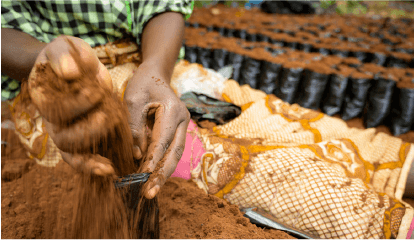
SYSTEMATIC MONITORING FOR ASSESSING DEGRADATION AND TARGETING RESTORATION INTERVENTIONS
Developed over several years of research across eastern and southern Africa, the Land Degradation Surveillance Framework (LDSF) was designed to provide a bio-physical baseline at landscape level, and a monitoring and evaluation framework for assessing processes of land degradation and the effectiveness of rehabilitation measures (recovery) over time. LDSF is using Specific, Measurable, Attainable, Relevant, and Time-bound indicator framework.
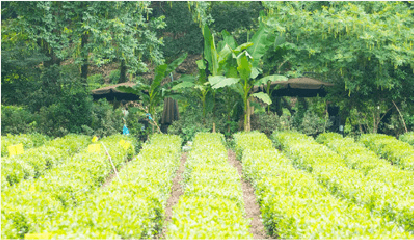
CROSS-SECTORAL POLICY LEADERSHIP FOR ADDRESSING RESTORATION
Approximately 1.6 billion people depend on forests and tress for their livelihoods. Sadly, the current rate of ecosystem degradation and slow pace of restoration critically undermines livelihoods and our ability to achieve the Sustainable Development Goals. Urgent action is required from all levels of society, including (and importantly) political buy-in.
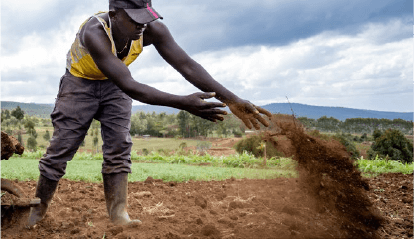
COALITION OF ACTION 09 FOR SOIL HEALTH – CA4SH
The main objective of the Coalition of Action 4 Soil Health (CA4SH) is to improve soil health globally by addressing critical implementation, monitoring, policy, and investment barriers that constrain farmers from adopting and scaling healthy soil practices. The Coalition will advocate for multi-stakeholder action to facilitate the adoption and scaling of healthy soil practices across diverse landscape. This includes process to guide and catalyze public and private sector investments in soil health, with positive outcome for people and nature.




















